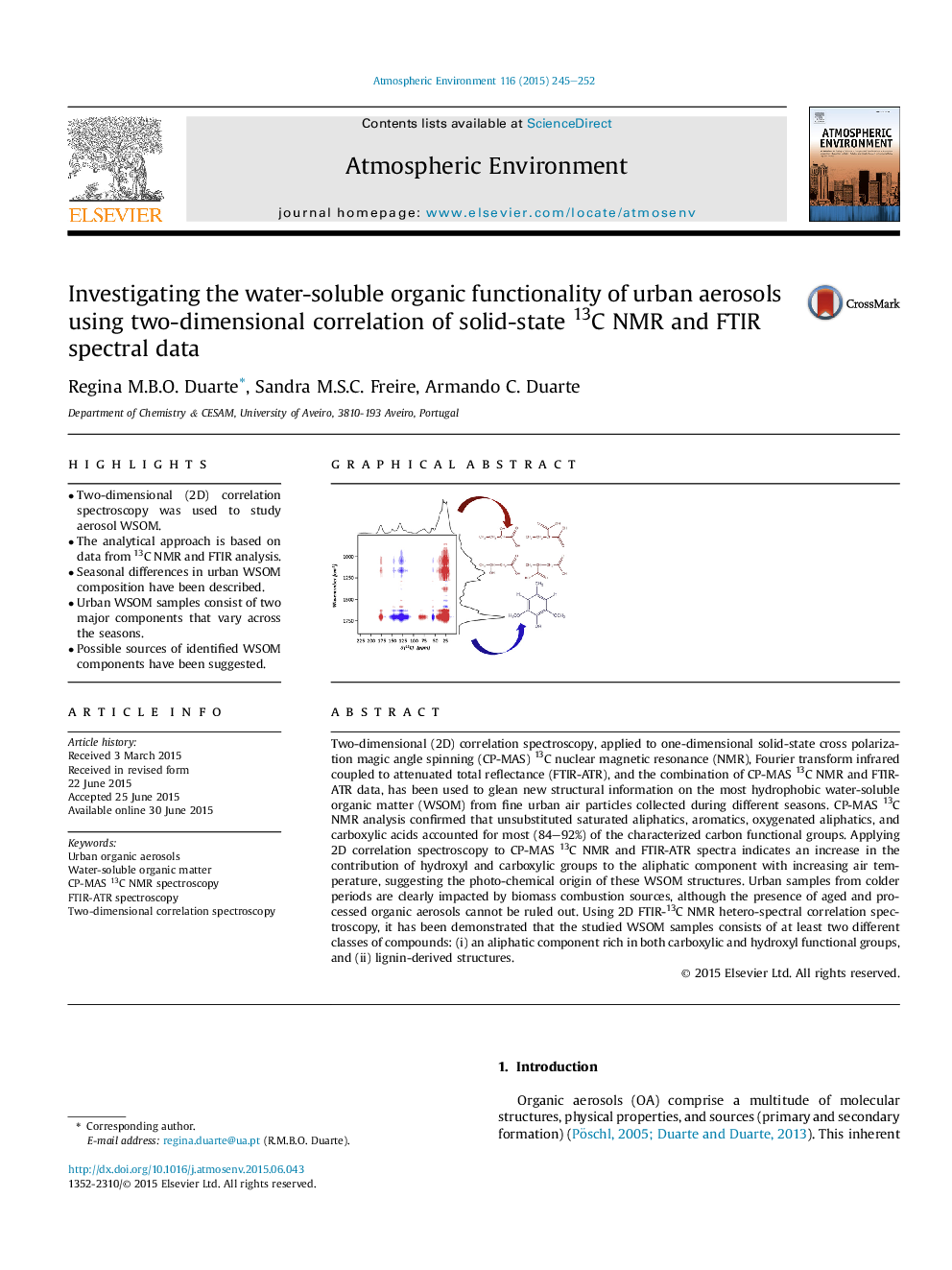| کد مقاله | کد نشریه | سال انتشار | مقاله انگلیسی | نسخه تمام متن |
|---|---|---|---|---|
| 4438133 | 1620355 | 2015 | 8 صفحه PDF | دانلود رایگان |

• Two-dimensional (2D) correlation spectroscopy was used to study aerosol WSOM.
• The analytical approach is based on data from 13C NMR and FTIR analysis.
• Seasonal differences in urban WSOM composition have been described.
• Urban WSOM samples consist of two major components that vary across the seasons.
• Possible sources of identified WSOM components have been suggested.
Two-dimensional (2D) correlation spectroscopy, applied to one-dimensional solid-state cross polarization magic angle spinning (CP-MAS) 13C nuclear magnetic resonance (NMR), Fourier transform infrared coupled to attenuated total reflectance (FTIR-ATR), and the combination of CP-MAS 13C NMR and FTIR-ATR data, has been used to glean new structural information on the most hydrophobic water-soluble organic matter (WSOM) from fine urban air particles collected during different seasons. CP-MAS 13C NMR analysis confirmed that unsubstituted saturated aliphatics, aromatics, oxygenated aliphatics, and carboxylic acids accounted for most (84–92%) of the characterized carbon functional groups. Applying 2D correlation spectroscopy to CP-MAS 13C NMR and FTIR-ATR spectra indicates an increase in the contribution of hydroxyl and carboxylic groups to the aliphatic component with increasing air temperature, suggesting the photo-chemical origin of these WSOM structures. Urban samples from colder periods are clearly impacted by biomass combustion sources, although the presence of aged and processed organic aerosols cannot be ruled out. Using 2D FTIR-13C NMR hetero-spectral correlation spectroscopy, it has been demonstrated that the studied WSOM samples consists of at least two different classes of compounds: (i) an aliphatic component rich in both carboxylic and hydroxyl functional groups, and (ii) lignin-derived structures.
Figure optionsDownload high-quality image (104 K)Download as PowerPoint slide
Journal: Atmospheric Environment - Volume 116, September 2015, Pages 245–252